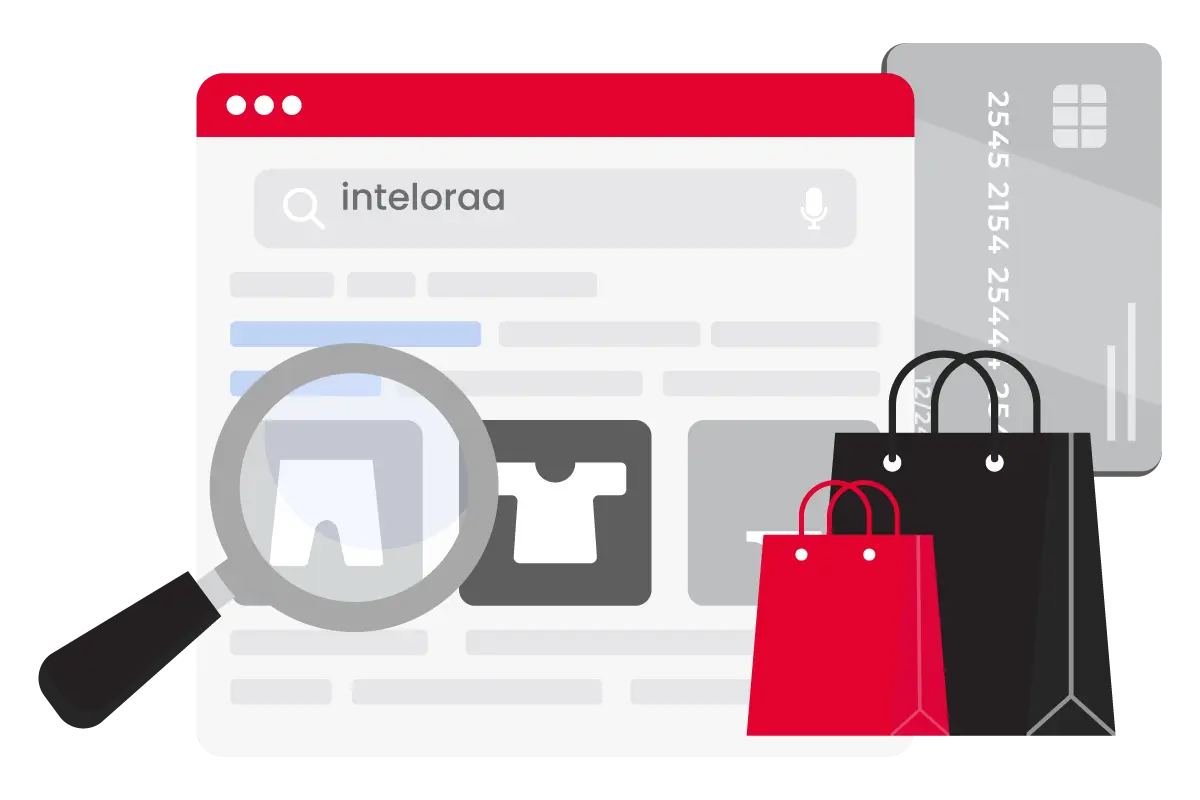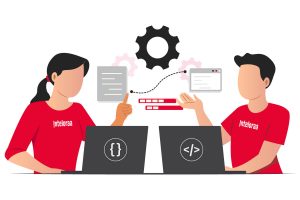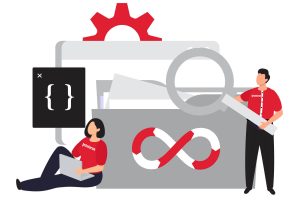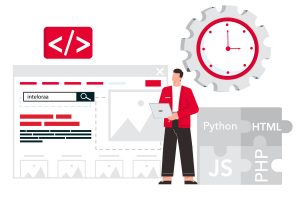E-commerce Website Development: Ultimate Guide for Beginners!

Want to sell your products online but have absolutely no clue where to start? Yeah, we’ve all been there.
Maybe you’ve got a great product that people keep asking to buy online, or you’re tired of being limited to local customers only. The idea of having an online store sounds amazing, but then you start thinking about all the technical stuff and suddenly your brain feels like it’s melting.
Here’s the truth: building an e-commerce website isn’t very scary. Sure, there are decisions to make and things to learn, but thousands of people launch online stores every single day. Most of them aren’t tech geniuses – they’re just regular business owners who figured out the process.
The pandemic basically forced everyone to shop online, which means there’s never been a better time to get your products in front of digital customers.
With endless choices and often contradictory advice, starting an online store can feel overwhelming — fast. That’s why we created this guide. We’ll take you through each step, one at a time, from initial planning to your official launch, so you can move forward with confidence.
Planning Your E-commerce Website
I know, I know – planning is boring and you just want to start building. But trust me on this one. The stores that skip this step are the ones that end up rebuilding everything six months later.
Know Your Target Customers
This isn’t some fancy marketing exercise. It’s actually pretty simple: who’s going to buy your stuff?
Are they busy parents shopping on their phones while kids are napping? College students browsing on laptops late at night? Business owners making purchases during work hours? Each group shops differently, and your website needs to work for them.
Define Your Products
Start with your best products and add more later. It’s way easier to manage 20 products really well than 200 products poorly.
Do you need to track inventory, or are you dropshipping? These decisions affect what kind of website you need.
Set Your Budget
Let’s be honest about money. A basic e-commerce site can cost anywhere from $1,000 to $50,000+ depending on what you want. Monthly costs can range from $30 to $500+. Yeah, it adds up.
But you can start smaller and grow. You don’t need every fancy feature right away.
Choose Your Business Model
Are you selling directly to customers (B2C) or to other businesses (B2B)? Maybe you’re thinking about subscription boxes or dropshipping? Each model has different website requirements, so figure this out early.
The key questions you need to answer: How will customers find you? What happens when someone wants to return something?
Once you know these basics, everything else gets a lot easier.
E-commerce Platform Options: Pros & Cons
Alright, time for the big decision: what platform are you going to use? This is where a lot of people get stuck scrolling through endless comparison articles. Let me break it down.
DIY Platforms (Perfect for Getting Started)
Shopify ($29-300+/month)
This is basically the iPhone of e-commerce platforms – everything just works, but you pay for that convenience. The good stuff: They handle all the scary technical stuff like security and hosting. Plus, there are tons of apps to add features when you need them. The not-so-good stuff: Those monthly fees add up fast, especially when you start adding apps. While basic tools can get you started, they can feel a bit restrictive if you’re dreaming of something truly original and tailored to your vision. Best for: Pretty much anyone who wants to focus on selling instead of dealing with technical headaches.
WooCommerce (Free + hosting costs)
Think of this as the Android of e-commerce – super customizable, but you need to know what you’re doing. The good stuff: It’s free! Well, sort of. You can customize literally everything, and it plays really well with WordPress if you’re already using that for your blog. The not-so-good stuff: You’re responsible for keeping everything updated and secure. If something breaks, you’re the one fixing it (or paying someone to fix it). Best for: People who are comfortable with WordPress or have a tech-savvy person on their team.
Squarespace ($12-40/month)
This is like the artsy cousin of website builders – everything looks gorgeous, but it’s not built specifically for heavy-duty selling. The good stuff: Their templates are absolutely beautiful. If you’re selling creative products or you care a lot about aesthetics, this might be your jam. The not-so-good stuff: It can feel limited when you want to do more advanced e-commerce stuff. Also, it’s not the fastest platform out there. Best for: Creative businesses, photographers, artists, or anyone with a smaller product catalog.
Custom Development (The Premium Route)
Sometimes none of the pre-built platforms fit what you need. Maybe you have a weird business model, or you need specific features that don’t exist anywhere else.
- When to Go Custom: You’ve got unique business requirements that platforms can’t handle. You’re planning to scale really big. You need the website to integrate with specific systems you already use.
- What It Costs: Basic custom store starts around $15,000. If you want fancy features, you’re looking at $40,000-100,000+. Enterprise-level stuff? Sky’s the limit.
- Why People Choose Custom: You get exactly what you want, it performs better, and you’re not paying monthly platform fees forever. Plus, you actually own everything.
Must-Have E-commerce Features
Okay, let’s talk about what your online store actually needs to work. I’m going to be real with you – there are a million features you could add, but most of them are just nice-to-haves.
Essential Features (Your Store Won’t Work Without These)
- Product Catalog: High-quality product images, useful descriptions, search & filter tools.
- Shopping Cart & Checkout: Guest checkout, multiple payment options, trust-building design.
- User Accounts: Order tracking, purchase history, favorites — helpful for customers and you.
- Payment Processing: Credit cards, PayPal, Apple/Google Pay — the more the better.
Important But Not Critical
- Reviews and Ratings
- Live Chat Support
- Email Marketing Integration
Design & User Experience Tips
- Clean, Professional Design: White space, readable fonts, limited colors.
- Mobile-First Everything: Responsive design, fast load times, big buttons.
- Dead Simple Navigation: Easy-to-find menus, search bar, breadcrumbs.
- Trust Signals Everywhere: Reviews, security badges, contact info, real product photos.
Common Mistakes That Kill Sales
- Popup Overload
- Complicated Checkout
- Hidden Shipping Costs
- Terrible Product Photos
- No Customer Service Info
Development Process & Timeline
- Planning & Strategy (2-3 weeks): Requirements gathering, wireframes.
- Design Phase (2-4 weeks): Mobile-responsive visual design.
- Development (4-8 weeks): Frontend + backend functionality.
- Launch Preparation (1-2 weeks): Testing, SEO basics, final setup.
Delays: Too many changes, too many products, complex integrations.
Pro Tip: Be involved, responsive, and plan a buffer.
Costs Breakdown & Budget Planning
Platform-Based Store Costs
- Setup: $500–$5,000
- Monthly Fees: $30–$300
- Apps/Plugins: $0–$200/month
- Custom Design: $1,000–$10,000
Custom Development Costs
- Basic Store: $15,000–$40,000
- Advanced Features: $40,000–$80,000
- Enterprise Level: $100,000+
The Costs Everyone Forgets About
- Hosting: $20–$500/month
- Payment Processing: 2.9% + 30¢ per transaction
- SSL Certificates: $50–$200/year
- Maintenance: $100–$500/month
- Marketing: $500–$5,000+/month
Money-Saving Tips
- Start with essential features
- Use pre-built templates
- Launch in phases
- Pick the right platform for your size
Final Thoughts
Look, building an e-commerce website isn’t rocket science, but it’s not exactly a weekend project either. The successful online businesses don’t try to build the perfect store on day one – they launch something good, learn from their customers, and keep improving.
Here’s the real truth: the hardest part isn’t the technical stuff. Most people expect overnight success, but the best e-commerce stores are built over months and years, not weeks.
If you’re feeling ready to stop planning and start building, that’s awesome. The key is taking the next step, whatever that looks like for you.
Inteloraa has helped tons of LA businesses launch their online stores, and honestly, the ones that succeed aren’t necessarily the ones with the biggest budgets or the fanciest features. They’re the ones that understand their customers and aren’t afraid to start.
Tags
Belayet Riad
Founder & CEO, Inteloraa
Top Rated Freelancer with over 12+ years of experience as a Full Stack Developer, specializing in front-end development and building exceptional digital experiences for modern businesses.
Contact / Request Quote



